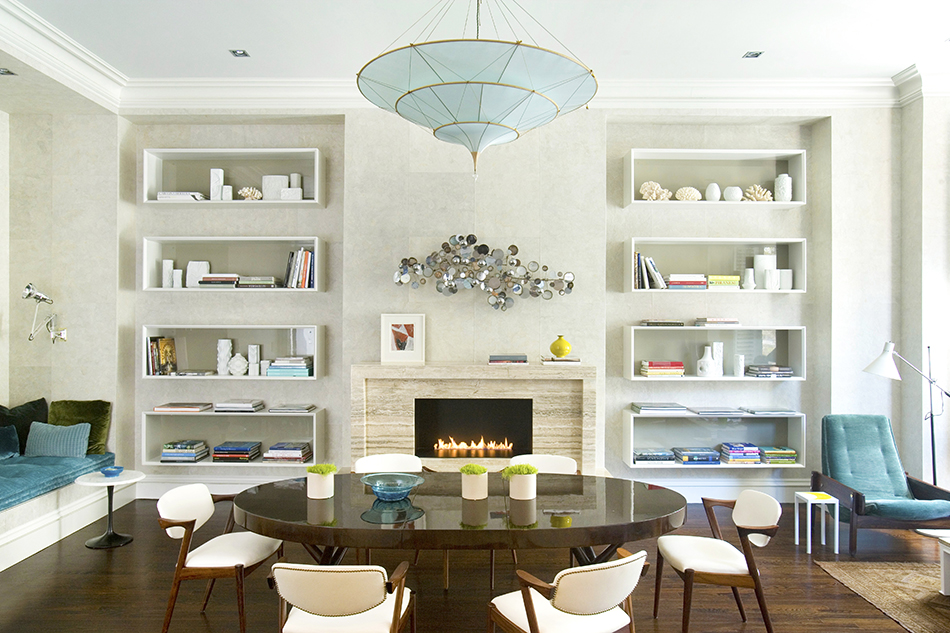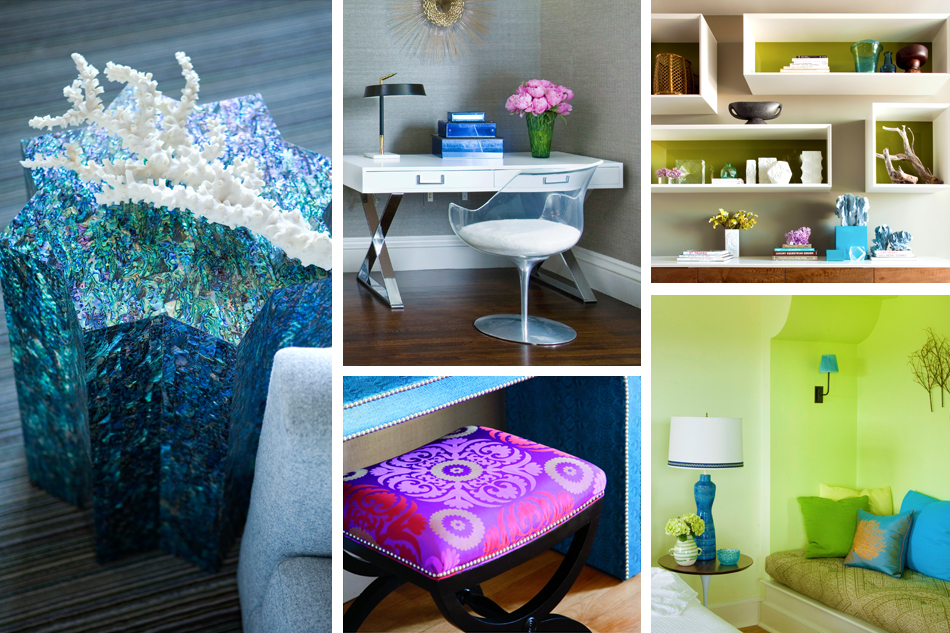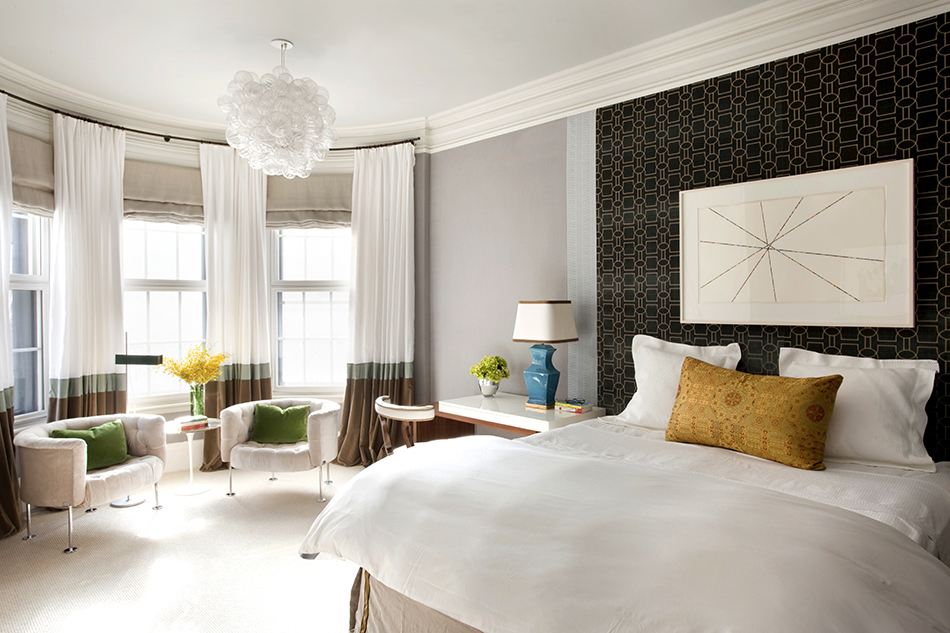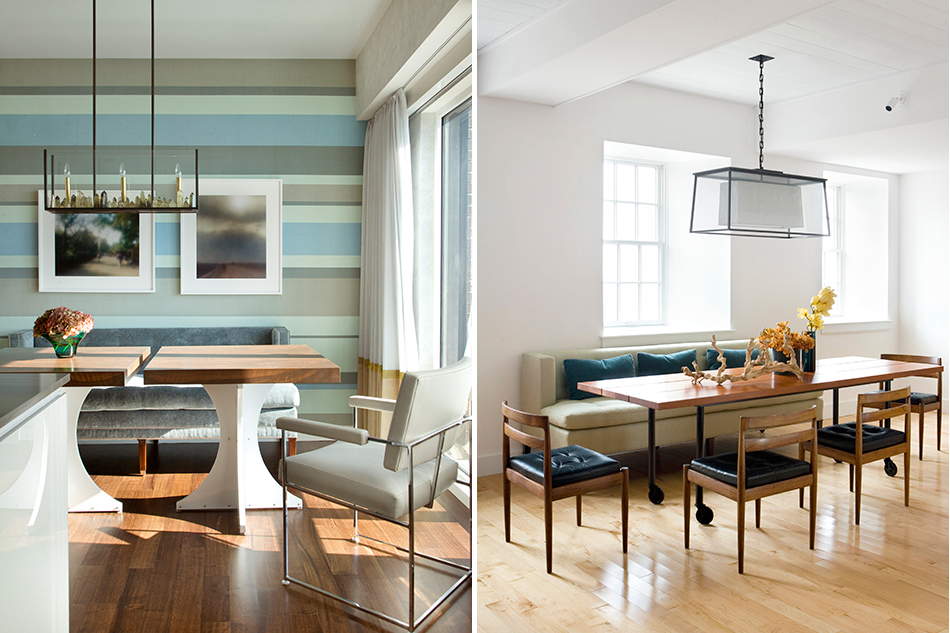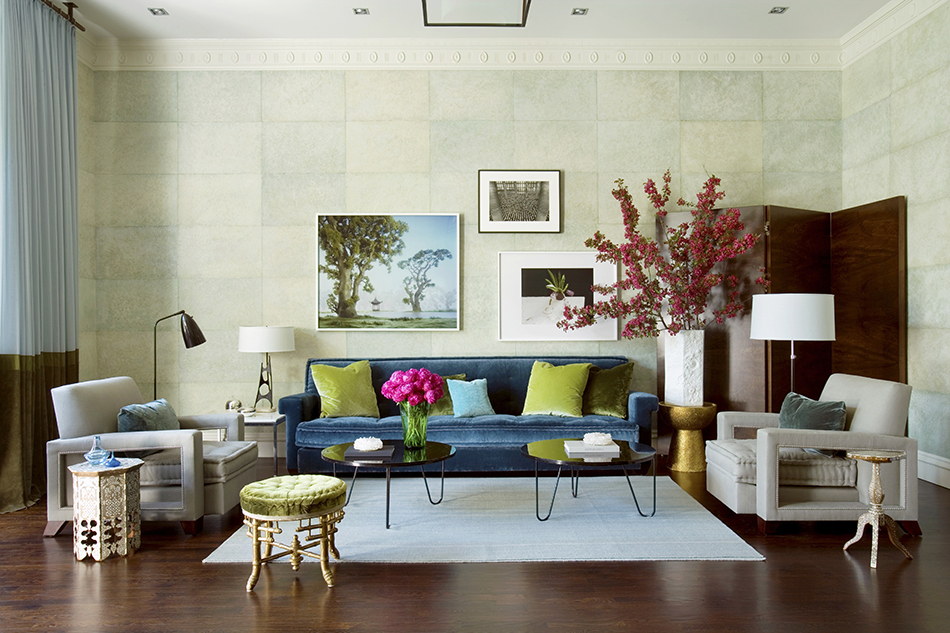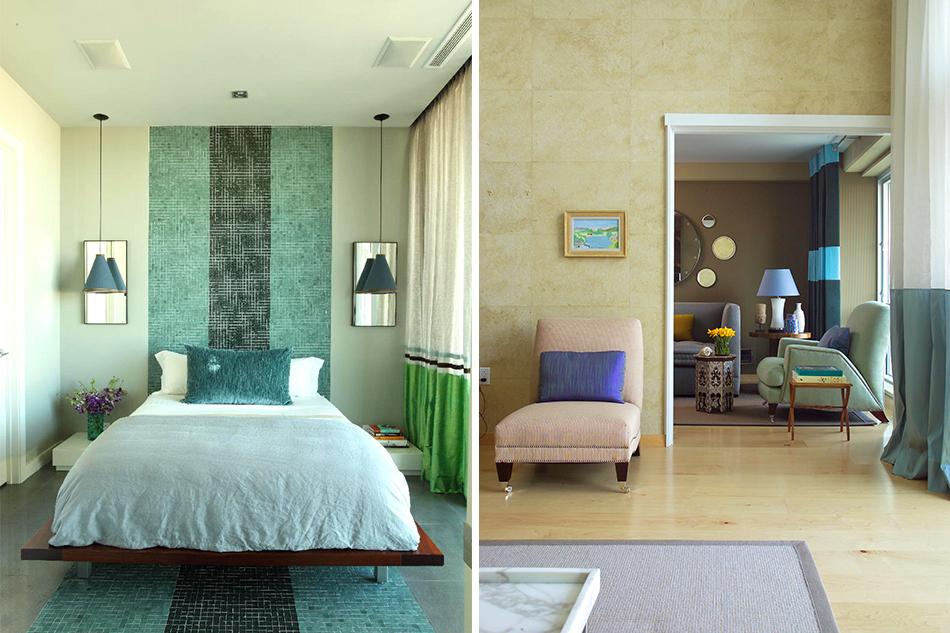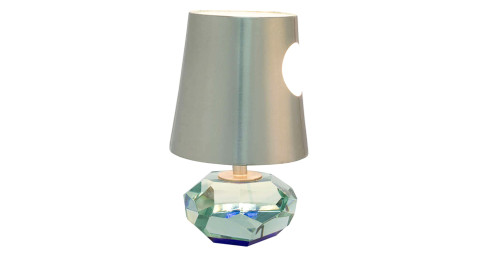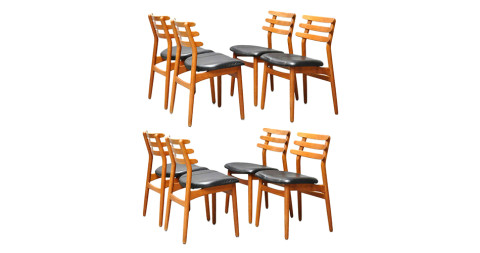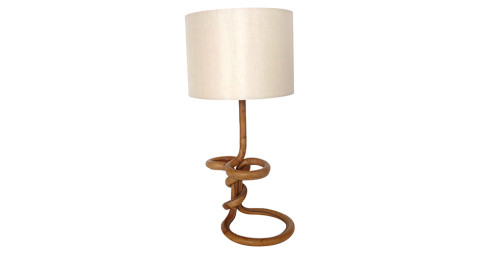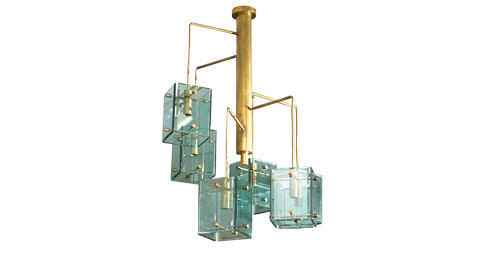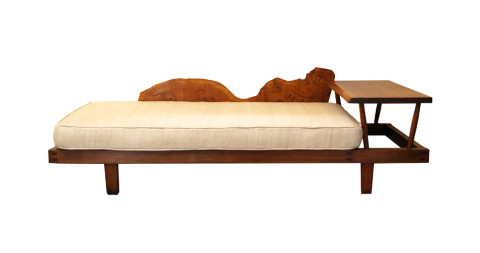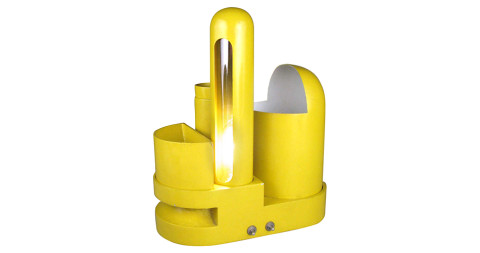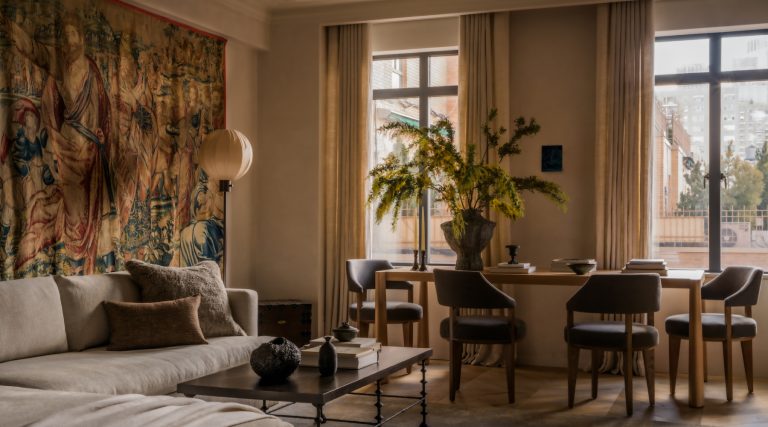
October 1, 2014Frank Roop’s traditionalist but colorful aesthetic grew out of a host of elements, including his background in fashion and his upbringing in Los Angeles’s laidback Topanga Canyon. Top: In a client’s Boston home, the designer commissioned a wall mural with hand-embroidered blossoms. All photos by Eric Roth and courtesy of Pointed Leaf Press
The first word that likely comes to mind when you think of the work of Boston designer Frank Roop? Color. The rooms he creates are full of it. For him, color gives depth to a space. “I’m bored with monochromatic interiors,” he asserts, pointing out that he doesn’t even paint ceilings pure white (they always have a tint). He is particularly attracted to cool, water-like hues — blues and greens — which he often mixes with accents of yellow and pink. Much of his inspiration comes from his travels, whether it’s a stained-glass window he admired in Barcelona or the vibrant medina of Marrakech. But he tries to avoid associations that look too contrived. “I like the idea of putting colors together that you wouldn’t have thought of,” he explains. “When I’m dealing with fabrics for projects, I literally pull out thousands of swatches, throw them down and see what they do to each other.”
Roop’s childhood was almost as colorful as his interiors. He was born in Los Angeles and spent his first few years in Topanga Canyon, a hippie haven where his mother raised goats and the family swimming pool out back was fashioned from an old water tower. One of Roop’s next-door neighbors was Grammy Award–winning blues musician Taj Mahal, who would pop over and play his banjo. “The kids in the neighborhood would bang on pots and pans,” Roop recalls, “and he would jam with us.”
Roop attended the University of Arizona, where he says he “studied tennis, basically” — he was a member of the college team — while also taking classes in business and fashion merchandising. He ended up leaving after a year, moving to Boston and accepting a job at the high-end menswear store Louis. The shop’s owner, Murray Pearlstein, quickly noticed Roop and promoted him to manager at the age of 21. During his subsequent 13 years at Louis, Roop not only developed a taste for fine quality, but also learned the value of custom design. “Murray’s whole deal was that everything that went into the store was unique,” he recalls. “When I made the transition to the interior design business, I did the same thing. I said, ‘I’m going to create things myself, or use vintage and antique, but not buy anything out of a store.’ I want each of my interiors to look like something you’ve never seen before.”
He decided to launch himself as a decorator in 1998, after the Boston Globe Magazine featured his apartment. Since then, things have snowballed. His interiors have graced the covers of Elle Decor and House Beautiful, and he has worked on projects that include a lake house in New Hampshire, an apartment in Miami’s South Beach, a 14,000-square-foot shingle-style house on Nantucket and numerous private residences in and around Boston. Many of these are captured in his 2011 monograph, The New Bespoke, published by Pointed Leaf Press.

“I like to add a design element that is unexpected or dramatic,” writes Roop of the extra-long custom bench he placed in the foyer of a colonial house outside of Boston, which is included in his monograph.
Roop insists that he is not limited to any one style. “I’m inspired by all kinds of spaces,” he says. “They can be traditional or modern or anything in between.” His projects do, however, have a number of common threads. One is the influence of his background in fashion. He will, for instance, often incorporate tailoring details, such as hand-stitching on the arms of a custom chair that resembles the needlework on the lapel of a man’s suit. He also loves stripes, especially horizontal ones, and often sews together bands of contrasting fabrics to create curtains. And while he loves bright hues, he’s not so keen on pattern. “I feel the color is already strong enough,” he explains. Textural contrast is another strong element. He’ll juxtapose a raw linen with a super-fine velvet, and combine shiny surfaces with matte finishes. Tactile wall treatments like paper-backed silks and grass cloths are another love.
When it comes to choosing furniture, meanwhile, Roop tends to favor an eclectic approach. “Things that are complementary but not matched up make rooms look more inviting and less pretentious,” he opines. He loves sculptural pieces and interesting shapes, and cares more about seeking out the unexpected than he does about provenance. “That, for me, is more interesting than things that are recognizable,” he explains. Which is not to say that he steers completely clear of named pieces. He treasures, for instance, the George Nakashima desk in his office, and the Poul Kjaerholm chaise and T.H. Robsjohn-Gibbings dining table in the country house near Hudson, New York, that he shares with his wife, Sharon, who works for Neiman Marcus, and their dog, Remy.
Dating from 1797, the house once belonged to a wealthy Mormon businessman named Anson Pratt, who fought at the Battle of Nauvoo in 1846. For Roop, “it’s one of the top Adam-style houses in America,” referring to the 18th-century neoclassical style of architecture. In his mind, it was also something of a design challenge — how to turn a formal home into a laid-back weekend retreat. He bleached the floors and put a white stain over them. He also decorated one wall in the kitchen with Moroccan tiles and another in the sitting room with a collection of 300 geodes mounted on acrylic blocks. Now that it’s complete, he can relax there on weekends by partaking in one of his favorite occupations — barbecuing. “There could be snow or rain or thunder or lightning, and he’s out there in the garden,” quips Sharon. “Our neighbors are yelling, ‘What are you doing? There’s a snowstorm.’ But Frank just puts down his margarita and keeps on going.”

